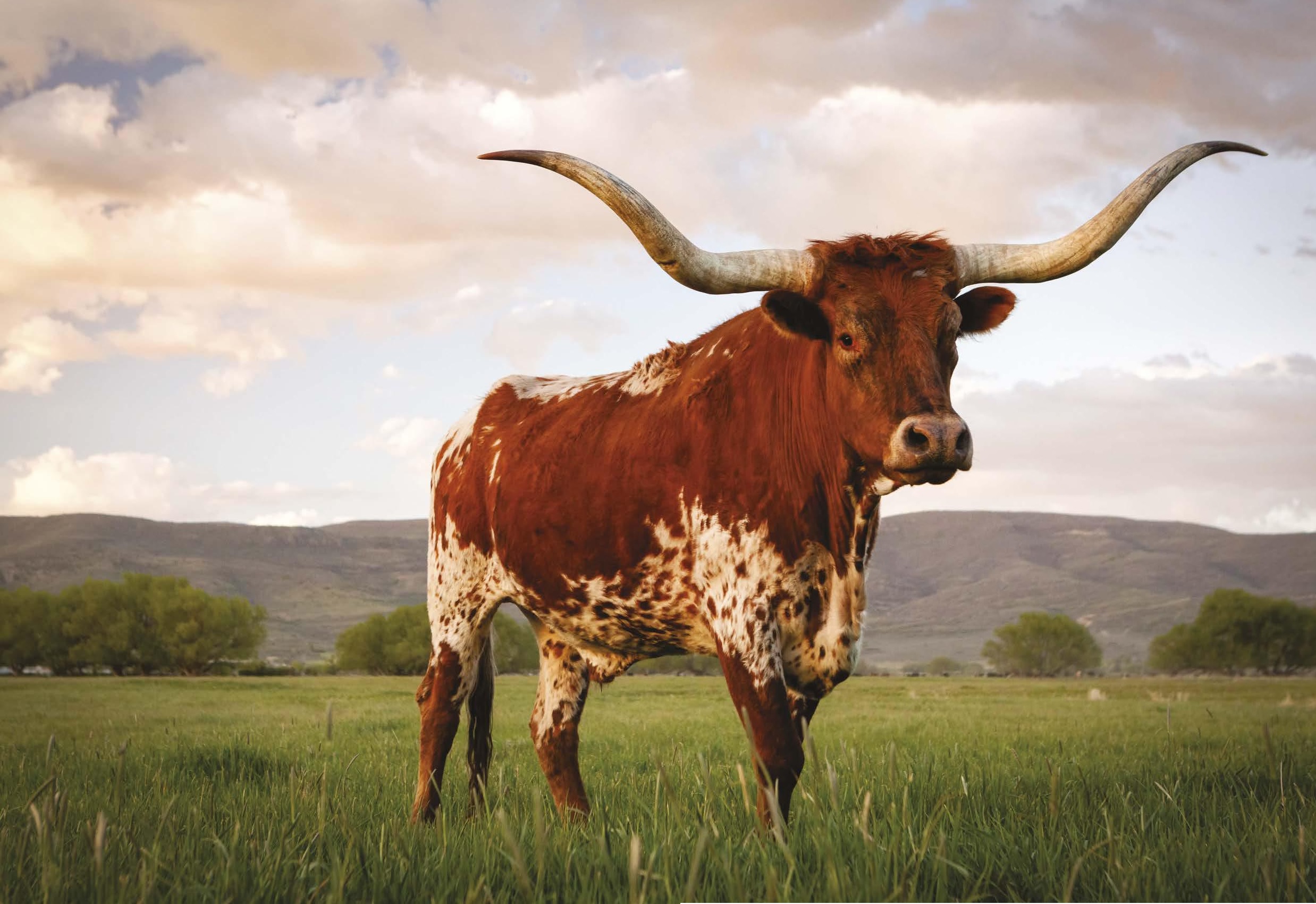試す 金 - 無料
BEST BEEF & PERFECT PORK
Hobby Farms
|Best of Hobby Farms 2023
THESE BREEDS THRIVE ON SMALL-SCALE HOBBY FARMS

Very popular with homesteaders, JERSEY COWS account for about 7% of all cows in the United States. This is a smaller-sized dairy breed; most mature cows weigh about 900 pounds and stand around 4 feet tall at the withers. However, it's respected for producing a high quantity of milk relative to their size (about 16,000 pounds per year) that is particularly rich in butterfat (4.9%) and protein.
Though their total production is lower than that of Holsteins, their net return (or dollars of profit per cow per year) is higher thanks to their lower feed requirements and ability to stay productive for many years. According to the American Jersey Cattle Association, Jerseys naturally produce the highest quality milk for human consumption. "Compared to average milk, a glass of Jersey milk has greater nutritional value: 15% to 20% more protein, 15% to 18% more calcium, and 10% to 12% more phosphorous, and also considerably higher levels of an essential vitamin, B12." Jersey milk has more protein, calcium and other nonfat solids compared to other breeds.

Like the Guernseys, Jerseys come from an island, the Isle of Jersey, located in the English Channel between England and France. They were imported to the U.S. in the early 19th century.
Modern Jerseys may be of a wide range in color. "There is little preference today between the solid and broken colors although most breeders slightly prefer the cattle with an unbroken color pattern," according to the Oklahoma State University Department of Animal Science. "Most prefer the dark tongue and switch, but this is more a matter of an identification point than a point of discrimination." The color may vary from a light gray or mouse color to a very dark fawn or a shade that is almost black.
このストーリーは、Hobby Farms の Best of Hobby Farms 2023 版からのものです。
Magzter GOLD を購読すると、厳選された何千ものプレミアム記事や、10,000 以上の雑誌や新聞にアクセスできます。
すでに購読者ですか? サインイン
Hobby Farms からのその他のストーリー

Hobby Farms
NEW YEAR, NEW CROPS
As you make your garden plans for this season, consider these picks from growers across the country.
6 mins
January / February 2026

Hobby Farms
Garden-Scale Crop Rotation
You don't have to be a big-time farmer to benefit from rotating crops.
4 mins
January / February 2026

Hobby Farms
BELTED GALLOWAY CATTLE
The unique appearance of Belted Galloway cattle inspires many questions about their origins.
1 min
January / February 2026

Hobby Farms
Goat Parasites
Grazing on an overly soiled pasture can sometimes lead parasites in your goat herd.
3 mins
January / February 2026

Hobby Farms
Rediscover Ancient Grains
Explore these nutritious and adaptable grains, known by many cultures over thousands of years.
8 mins
January / February 2026

Hobby Farms
HIGHLAND CATTLE
Highland cattle are an old heritage breed known to have grazed the rugged Scottish landscape since the 6th century.
1 mins
January / February 2026

Hobby Farms
SAY CHEESE
KEEP 'EM COMING
1 min
January / February 2026

Hobby Farms
DIY Essential Oils
Steam-distill your own essential oils at home.
6 mins
January / February 2026

Hobby Farms
Kubota Goes Grand
Kubota Tractor Corp. has unveiled its latest innovation for small-scale farmers and landowners: the Grand L70 Series. Designed with residential and commercial users in mind, this series blends power, comfort and cutting-edge technology into one versatile machine. With three configurations available — premium, deluxe and cold weather — the Grand L70 Series is built to meet the diverse needs of today’s small farms and rural properties.
1 min
January / February 2026

Hobby Farms
Raising a Bottle Calf
Being raised on a dairy farm, I don't remember a time when I wasn't well-versed in the raising of bottle calves.
9 mins
January / February 2026
Translate
Change font size
